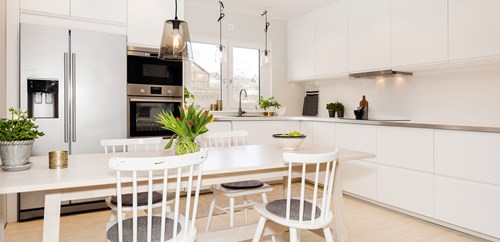Tips from our appliance repair team that will keep your oven working perfectly...
The last thing you want is to receive inflated energy bills or have to fork out for regular repairs, so it makes sense to take a few minutes to learn how to use your Whirlpool oven efficiently. While some of these tips might be fairly obvious, there are a few others that might just surprise you.
How to prolong the life of your oven
1. Adjust recipe times and temperatures for a Whirlpool convection oven
If you own a Whirlpool convection oven, which uses a fan to force hot air into every corner of the oven, then you’re already one step ahead, as it can reduce your oven-related energy costs by 20 percent. However, there are also more savings to be made.
You can adjust the cooking times and temperatures for a convection oven down. A good rule of thumb is to subtract 25°F from the temperature listed and multiply the time by 0.75. For example, if the cooking instructions tell you to bake your favorite brownies in a conventional oven for 40 minutes at 325°F, you can adjust that to 30 minutes at 300°F in your convection oven.
2. Don’t overload your oven
If you’re entertaining guests or have a big family to feed, the temptation might be to cram as much into the oven as you can. However, overcrowded ovens are far less efficient. Instead, take a look at the cooking instructions on each of the items and find alternative cooking methods where possible.
3. Don’t worry about preheating your oven
Most cooking instructions will tell you to heat your oven to a particular temperature before you put the food in. However, while precise temperatures might be important if you’re baking, you can put most types of food in as soon as the oven is turned on. That will make the most of all the heat it generates. You should adjust the cooking time accordingly as it typically takes five minutes for a conventional oven to reach the desired temperature.
4. Buy an induction oven
The Whirlpool induction oven cooks food evenly in half the time and can save up to 50% in energy and time compared to a regular Whirlpool oven. Food is heated directly from the induction shelf and across the entire base of the induction tray, which allows for more even cooking and reduces energy waste. An induction oven also requires almost no pre-heating, further improving its energy efficiency.
5. Use the timer and don’t open the door
Resist the urge to peek into the oven to see how your food is cooking. Opening the oven door even for just a few seconds can reduce the temperature by 25°F. Instead, set the timer and use the oven light to see how your food is coming along.
6. Keep it clean
Cleaning the oven is no one’s idea of a good time, but if energy efficiency is important to you, then you should try to keep it clean. That will ensure all the heat is directed at your food and not those horrible crispy bits on the side of your oven that you burnt last week.
7. Don’t use foil
Some people like to line their oven shelves with foil in the hope that it will improve efficiency by reflecting heat onto the food, but actually, it won’t. Using foil inhibits the even flow of air, which will make your oven less efficient.
8. Stagger your oven shelves
If you want to use multiple oven shelves at the same time, try to stagger them to maximize the flow of air. So for example, rather than using the top and middle shelves, use the top and bottom shelves instead.

Is your Whirlpool oven working efficiently?
If you have noticed that your Whirlpool oven is taking longer to heat up, emitting more heat or is not cooking as well as it should do, just give us a call. We will talk you through the potential issues and advise you whether it needs a repair.